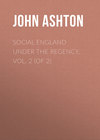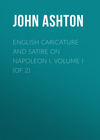Kitabı oku: «The Devil in Britain and America», sayfa 16
CHAPTER XXIII
Witchcraft in America – In Illinois: Moreau and Emmanuel – In Virginia: Case of Grace Sherwood – In Pennsylvania: Two Swedish Women – In South Carolina – In Connecticut: Many Cases – In Massachusetts: Margaret Jones; Mary Parsons; Ann Hibbins; Other Cases
North America has been colonized by the British long enough to have enjoyed the visitations of the Devil. And the present Americans, judging by the amount of literature written thereon,121 seem rather proud of his having dwelt among them; it gives an air of antiquity, and an old-world tone, to the favoured States, which is sadly lacking, and not otherwise procurable, in those unvisited by his Satanic Majesty. As far as I know, there have been but six or seven States troubled with witchcraft: Virginia, Pennsylvania, South Carolina, Massachusetts, Connecticut, and Illinois.
The latter is somewhat remarkable, as it was only received into the Union, as a State, in 1818; yet I read, in ‘The Pioneer History of Illinois,’ by ex-Governor John Reynolds (Bellville, Ill., 1852), pp. 142, 143, the following:
‘In early times the inhabitants of Illinois were in a small degree tinctured with the absurdity and nonsense of witchcraft and fortune-telling; but in after-days this ignorant superstition has entirely disappeared… It was the belief of some people, and families, that an old woman living on Silver Creek, Illinois, had the power of witchcraft, to take milk from her neighbours’ cows, without seeing or touching them…
‘In Cahokia, about the year 1790, this superstition [witchcraft] got the upper hand of reason, and several poor African slaves were immolated at the shrine of ignorance for this imaginary offence. An African negro, named Moreau, was hung for this crime on a tree not far south-east of Cahokia. It is stated that he had said, “he poisoned his master, but his mistress was too strong for his necromancy.” Another slave, Emmanuel, was shot, in Cahokia, for this crime, and an old woman, Janette, was supposed to have the power to destroy persons and property by her incantations. Many grown people, and all the children, were terrified at her approach.’
These two cases are verified by extracts from the ‘Record Book’ of Colonel John Todd, Lieutenant-Commandant of the County of Illinois, under Governor Patrick Henry, of the Commonwealth of Virginia:
‘Illinois to wit.
‘To Richard Winston, Esqre, Sheriff in chief of the District of Kaskaskia.
‘Negro Manuel, a Slave, in your custody, is condemned by the Court of Kaskaskia, after having made honorable fine at the door of the church, to be chained to a post at the water side, and then to be burnt alive, and his ashes scattered, as appears to me by record. This sentence you are hereby required to put in execution, on tuesday next at 9 o’clock in the morning, and this shall be your warrant.
‘Given under my hand and seal at Kaskaskia, the 13th day of June, in the 3rd year of the Commonwealth.’
‘To Capt. Nicolas Janis
‘You are hereby required to call upon a party of your militia to guard Moreau, a slave condemned to execution, up to the town of Kohos. Put them under an officer. They shall be entitled to pay, rashions and refreshment during the time they shall be upon duty, to be certifyed hereafter by you.
‘I am, Sir, your hble servant,
‘John Todd.
‘15th June 1779.’
Virginia, I believe, can only boast of one witch, and her case is not very widely known. Princess Anne is the southernmost county of Virginia, bounded on the north by Chesapeake Bay, and on the east by the Atlantic. Lynhaven Bay is on the Chesapeake River; and there lived, in the days of ‘good Queen Anne,’ a young woman named Grace Sherwood, who was somewhat shy in her dealings with her neighbours, probably because they invested her with uncanny powers, and even said that she had voyaged across the Atlantic, as far as the Mediterranean, in an eggshell; that on her arrival, at the end of her journey, she had been so pleased with the smell of the rosemary she had found growing there, that she brought back some of the plants with her, and set them about her cottage. These evil rumours were brought to the ears of the authorities, and Grace Sherwood was haled before the justices assembled at Princess Anne Court House; and the entry of her examination, etc., in the court record is as follows:
‘Princess Annes
‘At a Court held ye 10th July 1706

Grace Sherwood to be Ducked
‘Whereas Grace Sherwood being Suspected of Witchcraft – have a long time waited for a fit opportunity for a further Examination – and by her Consent, & Approbation of ye Court, it is ordered yt ye Sherr take all such Convenient assistance of boats and men, as shall be by him thought fit to meet & at John Harper’s plantation, in order to take ye said Grace Sherwood forthwith, & put her into water above man’s Debth & try her how she swims. Therein always having Care of her life to preserve her from Drowning & as soon as she comes Out yt he request as many Ancient and Knowing women as possible to come to Serch her Carefully for teat spotts and marks about her body not usual on Others & yt as they find ye same to make report on Oath To ye truth ther of to the Court; and, further, it is ordered yt Four women be requested to Shift and Serch her before she goo into ye water yt she carry nothing about her to cause any further Suspicion.
Order XX
Grace Sherwood Ducked, etc
‘Whereas on Complaint of Luke Hill in behalf of her Majesty yt now is agt Grace Sherwood for a person Suspected of Witch craft & having had Sundry Evidences sworn agt her, proving many Circumstances to which She could not make any Excuse, Little or Nothing to say in her own behalf, only Seamed to Rely on wt ye Court should doo, and there upon Consented to be tryed in ye Water, & Like-wise to be Serched again Bodily. Experiment being tried, She swiming wen therein, and bound Contrary to Custom & ye judgt of all ye Spectators, & afterward, being Serched, & five Ancient weomen who have all Declared on Oath yt she is not like yem nor noo Other women yt they know of … all wch Circumstances ye Court weighing in their Consideration, Doo there fore ordr yt ye Sherr take ye sd Grace Into his custody, and to commt her body to ye Common Gaol of this County, there to secure her by irons or other Wise, there to Remain till Such time as shall be otherwise Directed in order for her comming to ye Common Gaol of ye County, to be brought to a future tryall there.
‘Edwd Moseley &‘Jno Richason.’
As nothing more can be found respecting her, she was probably let go.
As a justice of the peace, William Penn had to sit in judgment upon two Swedish women who were indicted as witches, and true bills were found against them; but they got off, owing to some flaw in the indictment. And this, as far as I know, is the sole instance of a trial for witchcraft in Pennsylvania.
Drake, in ‘Annals of Witchcraft,’ p. 215, says: ‘About this period [1712], in the Colony of South Carolina, some suspected of witchcraft were seized upon by a sort of ruffianly Vigilance Committee, and condemned to be burnt, and were actually roasted by fire, although we do not learn that the injuries thus inflicted proved fatal. The parties so tortured, or their friends, brought action in the regular courts, for the recovery of damages; but the jury gave them nothing.’
In the early days of Connecticut there were twelve crimes punishable by death, according to the ‘Capitall Lawes, established by the General Court the First of December 1642,’ the second of which is: ‘Yf any man or woman be a witch (that is) hath, or consulteth wth a familliar spirit, they shall be put to death. Ex. xxii. 18. Lev. xx. 27. Deu. xxvij. 10, 11.’122 And they had not to wait long for a victim, for the last entry in John Winthrop’s Journal for 1646 is, ‘One … of Windsor arraigned and executed at Hartford for a witch,’ Nothing more is certainly known of this case, which is memorable as being the first execution for witchcraft in New England.
The Connecticut Legislature also applied the same law, somewhat modified, to the Pequot Indians, on May 31, 1675:123 ‘(2) That whosoever shall powau, or use witchcraft, or any worship to the divill, or any fals god, shall be convented and punished.’
The following are the known cases of witchcraft in Connecticut; but, as far as I can see, none present any particular features of interest for the reader.124

But it was in Massachusetts that witchcraft was rampant. The Pilgrim Fathers when they landed at Plymouth, on December 22, 1620, brought with them from England the belief in witchcraft and the personality of the Devil, which was then the creed of the majority of those living in the mother country, and therefore they were no worse than their brethren or parents. So that we must not blame them if we find among their early records, dated New Plymouth, November 15, 1636, that they considered witchcraft a capital crime, and enumerated as such directly after treason and murder; and they defined the crime so punishable as ‘Solemne compaction, or conversing with the divell, by way of witchcraft, conjuration, or the like.’
The Devil, however, had got somehow into Massachusetts, for we read in Governor Winthrop’s Journal that in 1639 ‘The Indians near Aquiday being pawwawing in this tempest, the Devil came and fetched away five of them. Query.’
The first instance of witchcraft in this Colony is recorded in Winthrop’s Journal in 1648, but he gives no specific date of the court being held, but most likely it was that of May 13, 1648, of which a record remains: ‘That This Court, being desirous that the same Course which hath been taken in England for the discovery of witches, by watching, may also be taken here, with the witch now in question, and therefore do order that a strict watch be set about her, every night, and that her husband be confined in a private room, and watched also.’
The entry in the Journal is as follows: ‘At this Court, one Margaret Jones of Charlestown was indicted and found guilty of witchcraft, and hanged for it. The evidence against her was: 1. that she was found to have such a malignant touch, as many persons (men, women and children), whom she stroaked or touched with any affection or displeasure, or etc., were taken with deafness, or vomiting, or other violent pains or sickness. 2. The practising physic, and her medicines being such things as (by her own confession) were harmless, as aniseed, liquors, &c., yet had extraordinary violent effects. 3. She would use to tell such as would not make use of her physic, that they would never be healed, and, accordingly, their diseases and hurts continued, with relapse against the ordinary course, and beyond the apprehension of all physicians and surgeons. 4. Some things which she foretold, came to pass accordingly; other things she could tell of (as secret speeches, etc.) which she had no ordinary means to come to the knowledge of. 5. She had, upon search, an apparent teat, as fresh as if it had been newly sucked, and, after it had been scanned; upon a forced search, that was withered, and another began on the opposite side. 6. In the prison, in the clear daylight, there was seen, in her arms, she, sitting on the floor, and her clothes up, etc., a little child, which ran from her into another room, and the officer following it, it was vanished. The like child was seen in two other places, to which she had relation; and one maid that saw it, fell sick upon it, and was cured by the said Margaret, who used means to be employed to that end. Her behaviour at her trial was very intemperate, lying notoriously, and railing upon the jury and witnesses, etc., and in the like distemper she died. The same day and hour she was executed, there was a very great tempest in Connecticut, which blew down many trees, etc.’
The next authentic instance is that of Mary Parsons, whose case seems to have been somewhat urgent, as on May 8, 1651, there is a minute on the court records:125 ‘The Court, understanding that Mary Parsons, now in prison, accused for a witch, is likely, through weakness to die before trial, if it be deferred, do order, that on the morrow, by eight o’clock in the morning, she be brought before and tried by the General Court, the rather that Mr. Pynchon may be present to give his testimony in the Case.’
This ‘Mr. Pynchon’ came from England with Governor Winthrop in 1630, and was named in the charter granted by Charles II. to Massachusetts, as one of the Governor’s eighteen assistants. He returned to England in 1652, settled at Wraysbury, Bucks, where he died October 29, 1662. Hutchinson says of him: ‘Mr. Pynchon was a gentleman of learning, as well as religion. He laid the foundation of Roxbury, but soon removed to Connecticut River; was the father of the town of Springfield, where his family hath flourished ever since.’
For some reason, she was not brought before the court till May 13, when the following is recorded: ‘Mary Parsons, wife of Hugh Parsons of Springfield, being committed to prison for suspicion of witchcraft, as also for murdering her own child, was, this day, called forth, and indicted for Witchcraft. “By the name of Mary Parsons, you are here, before the General Court, charged, in the name of this Commonwealth, that, not having the fear of God before your eyes, nor in your heart, being seduced by the Devil, and yielding to his malicious motion, about the end of February last at Springfield, to have familiarity, or consulted with, a familiar spirit, making a covenant with him; and have used divers devilish practices by witchcraft, to the hurt of the persons of Martha and Rebecca Moxon, against the Word of God, and the laws of this jurisdiction, long since made and published.” To which indictment she pleaded “Not guilty.” All evidences brought in against her being heard and examined, the Court found the evidences were not sufficient to prove her a witch, and therefore she was cleared in that respect.’
But she was indicted for the murder of her child, found guilty, and sentenced to be hanged; it is doubtful, however, whether the sentence was ever carried out. Her husband, ‘One Hugh Parsons of Springfield, was tried in 1652 for witchcraft, and found guilty by the jury. The Magistrate refused to consent to the verdict, and the case, as the law provided, came to the General Court, who determined that he was not legally guilty of witchcraft.’126
‘The most remarkable occurrence in the Colony in the year 1655 was the trial and condemnation of Mrs. Ann Hibbins for witchcraft. Her husband, who died in the year 1654, was an agent for the Colony in England, several years one of the assistants, and a merchant of note in the town of Boston; but losses in the latter part of his life had reduced his estate and increased the natural crabbedness of his wife’s temper, which made her turbulent and quarrelsome, and brought her under church censures; and, at length, rendered her so odious to her neighbours, as to cause some of them to accuse her of witchcraft. The Jury brought her in guilty, but the magistrates refused to accept the verdict, so the cause came to the General Court, where the popular clamour prevailed against her, and the miserable old woman was condemned and executed. Search was made upon her body for tetts, and in her chests for puppets, images, etc., but there is no record of anything of that sort being found. Mr. Beach, a minister in Jamaica, in a letter to Doctor Increase Mather in the year 1684, says, “You may remember what I have sometimes told you your famous Mr. Norton once said at his own table, before Mr. Wilson the pastor, elder Penn and myself and wife, etc., who had the honour to be his guests. That one of your magistrate’s wives, as I remember, was hanged for a witch, only for having more wit than her neighbours. It was his very expression, she having, as he explained it, unhappily guessed that two of her persecutors, whom she saw talking in the street, were talking of her; which, proving true, cost her her life, notwithstanding all he could do to the contrary, as he, himself, told us.”127
‘It fared with her as it did with Joan of Arc in France; some counted her a saint, and some a witch, and some observed solemn marks of Providence set upon those who were very forward to condemn her, and to brand others upon the like ground, with the like reproach. This was the second instance upon record of any persons being executed for witchcraft in New England. She was not executed until June, 1656. She disposed of her estate by will executed May 27, 1656, and a codicil June 16. She appointed several of the principal gentlemen overseers, and hoped they would show her so much respect, as to see her decently interred. There was no forfeiture of goods for felony.’
There was a case of witchcraft in Hartford in 1662, when three women were condemned, and one, at least, executed. In 1669 Susanna Martin, of Salisbury, was tried on this charge, ‘but escaped at that time.’ Another case at Groton in 1671, and yet another at Hampton in 1673. In 1658, in Essex County, an attempt was made to convict one John Godfrey, of Andover, as a witch, and at the County Court of Salem, June 29, 1659, he was bound in one hundred pounds to appear when called upon. But he turned the tables against his accusers, bringing actions against them for slander. In one case he got twopence damages and twenty-nine shillings costs, in another ten shillings damages and costs fifty shillings.
In November, 1669, Goody Burt, a widow, was prosecuted, but acquitted. In 1673 Eunice Cole, of Hampton, was tried, but her sentence was ‘to depart from, and abide out of, this jurisdiction.’ On November 24, 1674, at Salem, which even then was coming to the fore with its witches, Christopher Browne was had up before the County Court, for ‘having reported that he had been treating or discoursing with one whom he apprehended to be the Devil, which came like a gentleman, in order to his binding himself to be a servant to him. Upon his examination, his discourse seeming inconsistent with truth, etc., the Court giving him good counsel and caution, for the present dismiss him.’
On March 30, 1680, Caleb Powell was brought before the court at Ipswich, under an indictment of witchcraft, in molesting one William Morse, of Newbury, stones being thrown, furniture behaving abnormally, bedclothes snatched off, and many other inconveniences; but it could not be proved, and the wind-up of the affair was: ‘Though this court cannot find any evident ground of proceeding against the said Caleb Powell, yet we determine that he hath given such ground of suspicion of his so dealing, that we cannot so acquit him, but that he justly deserves to bear his own share, and the costs of the prosecution of the complaint.’ Elizabeth Morse, wife of the above, was next, on May 20, 1680, tried and convicted of witchcraft. On May 27 she was sentenced to death, was twice reprieved, and ultimately allowed to return home.
CHAPTER XXIV
Cotton and Increase Mather – The Case of Goodwin’s Daughter – That of Mr. Philip Smith – The Story of the Salem Witchcrafts – List of Victims – Release of Suspects – Reversal of Attainder, and Compensation
We now come to the time of Cotton Mather, whose name is a ‘household word’ in connection with witchcraft in Massachusetts. He was the son of Increase Mather, D.D., one of the early presidents of Harvard College, was born in 1633, studied at Harvard, and at the age of twenty was appointed co-pastor with his father at Boston. He begins his first witch story thus: ‘There dwells at this time, in the south part of Boston, a sober and pious man, whose name is John Goodwin, whose Trade is that of a Mason, and whose Wife (to which a Good Report gives a share with him in all the Characters of Virtue) has made him the Father of six (now living) Children. Of these Children, all but the Eldest, who works with his Father at his Calling, and the Youngest, who lives yet upon the Breast of its mother, have laboured under the direful effects of a no less palpable than stupendous Witchcraft.’128
As the reader will see that it is impossible to quote Cotton Mather very much at length, on account of his excessively rotund style, I must tell the story as briefly as possible. Sometimes these unhappy children would be by turns either deaf, dumb, or blind, or all three at once, their jaws be dislocated, and then close sharply with a loud snap. ‘They would bark at one another like Dogs, and again purr like so many Cats… Yea they would fly like Geese; and be carried with an incredible Swiftness thro’ the air, having but just their Toes now and then upon the ground, and their Arms waved like the Wings of a Bird. One of them, in the House of a Kind Neighbour, flew the length of the Room, about 20 foot, and flew into an Infant’s high armed Chair; none seeing her feet all the way touch the floor.’
Cotton Mather took the eldest daughter home to live with them, in order that he ‘might be furnished with Evidence and Argument as a Critical Eye Witness, to confute the Saducism of this debauched Age.’ For some days all went well, but on November 20 she was once more possessed. She tried to fly, to dive, her eyes sunk into her head, so that they thought they would never return to their normal position, and she complained that Goody Glover, a poor crazy Irish woman, had put an invisible but very potent chain round her leg. She could not read the Bible, but a Quaker book she was able to read, with the exception of the names of God and Christ. Queer books, like the ‘Oxford Jests’ and ‘Cambridge Jests,’ she could read well enough, but could only pronounce the words ‘Devils’ or ‘Witches’ with extreme difficulty.
‘Every now and then an Invisible Horse would be brought unto her by those whom she only called them, and, Her Company: upon the Approach of Which, her eyes would be still closed up; for, (said she) They say I am a Tell-Tale, and, therefore, they will not let me see them. Upon this would she give a Spring as one mounting an Horse, and Settling her self in a Riding Posture, she would, in her Chair be agitated as one sometimes Amble-ing sometimes Trotting, and sometimes Galloping very furiously.’
This state of things would not do, so divers ministers and devout friends fell to a-praying, but all to no purpose, her invisible adversaries on one occasion dragging her to an oven which was heating, and another time choking her, till she was black in the face, with an invisible rope and noose; she even began to torment good Mr. Mather. ‘When I had begun to study my Sermon, her Tormentors again seized upon her; and all Fryday and Saturday did they manage her with a special Design, as was plain, to disturb me in what I was about. In the worst of her extravagancies, formerly, she was more dutiful to myself than I had reason to Expect, but, now, her whole carriage to me, was with a Sauciness that I had not been us’d to be treated with. She would knock at my Study Door, affirming That some below would be glad to see me; when there was none that ask’t for me. She would call to me with multiplyed Impertinences, and throw small things at me, wherewith she could not give me any hurt. Shee’d Hector me at a strange rate for the work I was at, and threaten me with I know not what mischief for it.’
By dint of energetic prayer she began to amend, but she had one more very bad breakout. ‘Moreover, Both she at my house, and her Sister at home, at the time which they call Christmas, were by the Dæmons, made very drunk, though they had no strong Drink (as we are fully sure) to make them so. When she began to feel herself thus drunk, she complain’d, O, they say they will have me to keep Christmas with them! They will disgrace me when they can do nothing else! And, immediately the Ridiculous Behaviour of one drunk, were with a wonderful exactness represented in her Speaking, and Reeling, and Spewing, and anon Sleeping, till she was well again.’
The next example Cotton Mather gives us is that of ‘Mr. Philip Smith, aged about Fifty years, a Son of eminently vertuous Parents, a Deacon of the Church at Hadley, a Member of our General Court, an Associate in their County Court, a Select-man for the affairs of the Town, a Lieutenant in the Troop; and, which crowns all, a man for Devotion and Gravity, and all that was Honest, exceeding exemplary. Such a man, in the Winter of the year 1684 was murdered with an hideous Witchcraft, which filled all those parts with a just astonishment.
‘He was concerned about Relieving the Indigencies of a wretched woman in the Town; who, being dissatisfied at some of his just cares about her, expressed her self unto him in such a manner, that he declared himself apprehensive of receiving mischief at her hands; he said he doubted she would attempt his Hurt.’
In the beginning of the following January he fell sick, and took to his bed; but he could not rest, he was delirious and spoke in sundry voices and languages, and felt hundreds of pins pricking him all over. Sometimes there was a strange smell of musk about the place. As, in his agony, he called upon the supposed witch, his kind friends ‘did three or four times in one Night go and give Disturbance to the Woman that we have spoken of: all the while they were doing of it, the good man was at ease, and slept as a weary man; and these were all the times they perceived him to take any sleep at all.’
Sometimes fire was seen on the bed, but when attention was called to it, it vanished. Something as big as a cat moved in the bed, but no one could catch it; and ‘a discreet and sober Woman, resting on the Bed’s Feet, felt as it were, a Hand, the Thumb and the Finger of it, taking her by the side and giving her a Pinch; but turning to see What it might be, nothing was to be seen.’ Many more marvels occurred, and at last the poor man died, yet even then his bed moved of itself more than once, and at night, when they were preparing for his funeral, noises were heard in the room ‘as though there had been a great Removing and Clattering of stools and chairs.’ I cannot find that the witch was punished.
He next gives an instance of a boy at Tocutt, who held a great deal of communication with the Devil without absolutely resigning his soul to him, and who must have lived a very uncomfortable existence. ‘He speaks of men coming to him before they come in Sight; and, once, two being with him, their Backs turned, the Devil carried him away, they knew not how, and after search, they found him in a Cellar, as dead, but, after a little space, he came to Life again. And another time, threw him up into a Chamber, stopped him up into a Hole where they after found him. Another time, he carried him about a Bowshot, and threw him into a Hog-Stye amongst Swine, which ran away with a terrible noise.’
He gives two more instances of possession by the Devil; but they are mild cases which yielded to prayer. There are other minor cases of witchcraft which I have omitted, because I would fain have space to tell of the works of the Devil at Salem in 1692.
Salem was then a small village, about sixteen miles north-east of Boston, and its minister was the Rev. Samuel Parris, born in London in 1653. He entered Harvard College, but could not take a degree, went to Barbados, where he engaged in mercantile pursuits, and finally turned religious, and was ordained minister of Salem congregation in 1689, naturally taking a leading part in the little community.
At his house, during the winter of 1691-92, a society of girls met, curiously enough, for the purpose of practising palmistry, fortune-telling, necromancy, magic, and spiritualism; and they soon became so far advanced in these arts as to be seized with unnatural spasms, falling insensible on the floor, writhing in agony, and uttering piercing cries. As this conduct was decidedly abnormal, as was their amusement, it was settled that they were bewitched, and they were sympathized with as being ‘afflicted Children.’ Fasting and prayer were tried, but with no good result. On being questioned as to who had bewitched them, they answered ‘Good,’ ‘Osborn,’ and ‘Tituba.’ Sarah Good was a woman generally disliked, Sarah Osborn was a bed-ridden woman who did not bear a very good character, and Tituba was an Indian woman in Mr. Parris’ service.
On March 1, 1692, they were brought before the court charged with bewitching the children. One indictment must serve as a specimen for all:
‘The Jurors for our Sovereigne Lord & Lady King William & Queen Mary Doe present: That Sarah Good, ye wife of William Good of Salem Village, In the County of Essex, husbandman, upon ye first day of March in ye fourth year of ye Reigne of our Sovereigne Lord & Lady Wm & Mary, by ye Grace of God, of England, Scotland, ffrance & Ireland King & Queen, defendrs of ye faith etc & Divers other days & times as well before as after, Certaine Detestable Arts, Called Witchcrafts & Sorceries, wickedly & ffeloniously hath used, practised & Exercised at & within ye Township of Salem aforesaid, In, upon & against An Puttman, Single woman of Salem Village, by which said Wicked arts, the said An Puttman ye said first day of March, in ye fourth year abovesaid & divers other other days & times, as well before as after, was & is hurt, Tortured, afflicted, Pined, Consumed, wasted & Tormented, & also for Sundry acts of Witchcraft by said Good Committed & done before & since that time against ye peace of our Soveraigne Lord & Lady ye King & Queen Their Crowne & dignity & against ye forme of Statues In that Case made & provided.
‘Witness. Ann Putman. Jurat. Eliz. Hubbard. Abigail Williams. Jurat.’
On examination, Good and Osborn denied the accusation in toto, but Tituba, the Indian woman, gave damning evidence against them, and it is worthy of being given in extenso:
‘THE EXAMINATION OF TITIBE
‘Titibe what evil Spirit have you familiarity with? – None.
‘Why do you hurt these children? – I do not hurt them.
‘Who is it then? – The Devil for ought I know.









